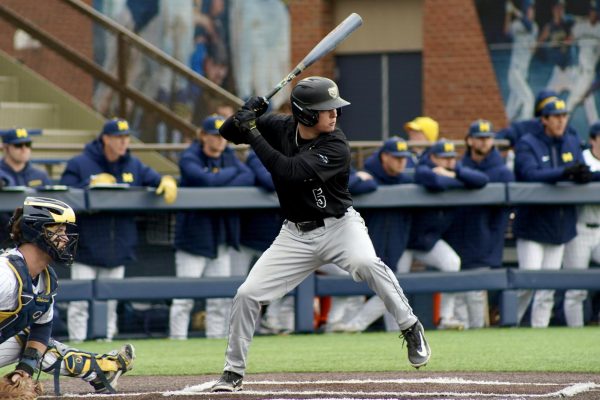Opinion: Baseball’s new pitch clock is awful, goes against sport’s core values
I have a bone to pick with Major League Baseball (MLB) and its players.
In case you didn’t know, over the offseason, the MLB made up a list of a variety of new rules. These rules were put in place to attract more fans to the sport by making the games quicker and encouraging more base-stealing, among other things.
These rules include a pitch clock, a ban on shifts, pickoff limitations, bigger bases and a limit on when position players can pitch.
Spring training is about a month old, and we’ve had an opportunity to see these rules enforced.
Although the pickoff limitations, bigger bases and limits to when position players can pitch are odd rules, I’ll admit there’s nothing inherently wrong with them. However, I have a feeling that one of these rule changes would cause Abner Doubleday — the inventor of baseball — to roll over in his grave.
The pitch clock is arguably the worst rule change in any sport in the history of time.
Pitchers are given 15 seconds to throw a pitch with no runners on base and 20 seconds to throw when runners are on. Additionally, hitters must be in the batter’s box and ready for the pitch to be delivered with eight seconds remaining on the pitch clock.
If the pitcher fails to deliver the ball within the specified time, a “ball” will be automatically added to the pitch count. Similarly, if the batter fails to be in the batter’s box and ready for the pitch with eight seconds left on the clock, a “strike” will be automatically awarded to the pitch count.
What does this mean?
This means pitchers can potentially be awarded a strikeout without even throwing three strikes. And batters can draw walks without four balls being thrown.
What are we doing here? This is not baseball.
Although the pitch clock is certainly doing its job — spring training games are finishing 25 minutes faster than they did in 2022, according to ESPN’s Jeff Passan — there’s a bigger, overarching issue.
Ever since Doubleday invented baseball in 1839, the game has been played at its own pace. No clock, no time limit, nothing to say the game is done except 27 outs for one team and 27 outs for the other team.
You might say, “what happens if teams struggle to get outs?” Well, too bad. It’s baseball. Get three outs, or you’ll be standing out in the scorching heat for quite some time.
As far as I know, the 2003 Detroit Tigers aren’t still standing out in the field at Comerica Park waiting to get their third out to finish off the ninth inning. One of the worst baseball teams ever got all the outs they needed. The games will always end.
Now, I understand that teams are still required to get three outs every inning — but what’s next? A two-minute limit per batter? A 15-minute inning limit? A two-and-a-half-hour game limit?
It’s a disgrace to the game that has been played the same way for more than 150 years.
Baseball is meant to be played at its own pace. Football is played for 60 minutes, hockey for 60 minutes and basketball for 48.
There shouldn’t be restrictions on the game of baseball. The beauty of the sport is that you can take a half day off of work and head to the ballpark on a beautiful summer afternoon to catch a 1:10 p.m. first pitch.
Now, I can probably count on two hands how many times this rule will actually be implemented throughout the 2,430 MLB games that will be played this season, but it doesn’t matter how many times the rule is enforced. What matters is the rule is bad in nature and will only ruin the game of baseball more.
A dying sport is becoming desperate to re-attract its audience to what once was known as America’s pastime. If football hasn’t already stolen that title, it soon will with the addition of this rule.











Jeff • Jun 24, 2024 at 9:58 AM
Tradition means nothing, statistical integrity means nothing. Baseball would survive, but adding a timeclock in any way shape or form is ruinous to the integrity of the game. As a lifelong fan since 1965, I have seen rule changes, strikes and stoppages, the steroid era. None of this impinged on the integrety of the game itself. But the time clock and the free runner…. I cannot watch baseball anymore. Close games are now decided in late innings by that free runner placed at 2nd base.
I think MLB should go back to the original game. Get rid of the DH even. Make baseball baseball again. I will return if I can enjoy the game again. Baseball, RIP